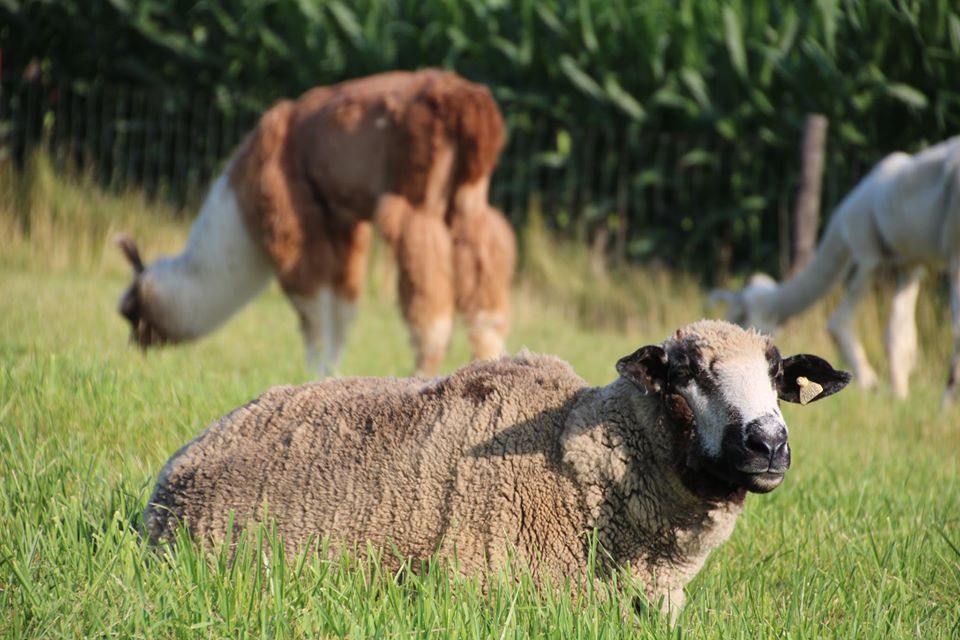|
Above: An adult suri female showing us great lock structure up her neck.
|
As a farm that produces fiber bearing animals, it is only natural that we would develop a strong interest in textiles. Each year our entire herd / flock is shorn and our fleeces are harvested. Shearing the animals not only provides us a high quality product, but it also is necessary for the animal's health. The shearing is done with electric shears and each animal is safely restrained during the process for their own safety. Most of the animals absolutely love the opportunity to give up their fiber each spring.
"Llama fiber is actually not considered a wool because it has a hollow core."
In South America llamas were originally domesticated as beasts of burden and sources of meat. When llamas started being imported into the United States a heavy emphasis on fleece quality was embedded into the market. Today llama fleece is advancing at lightning speed with micron counts (measurement of fineness) that rival and exceed their cousin, the alpaca.
|
|
Llama Fiber is actually not considered a wool because it has a hollow core. It comes in 22 different colors with an almost unlimited number of variations and patterns. Camelid (Llama or Alpaca) fiber has several advantages over traditional sheep wool. 1) Due to its hollow core, llama fleece acts as an incredible insulator. They have one of the highest weight to warmth ratios of any fiber bearing animals. 2) Because llamas do not produce lanolin like a sheep, they are hypoallergenic. 3) Not 100% water resistant, but has fantastic wicking properties. You can wear you llama garment in confidence knowing that an accidental spill will not ruin it. So, why do we raise wool sheep too? 15 years ago we were totally sold on the idea of processing only 100% Llama products... that is until we started. We quickly realized that the yarn had little bounce or memory. It worked great for lace weight projects, but llama does not have enough crimp to meet all of our creator's needs. After some research we invested in a CVM Rommeldale. We love the fine, tightly crimped fleece and appreciate their status as "critically rare" as listed by the Livestock Conservancy. Rommeldales produce approximately 8-10 lbs of wool annually, which is significantly more than what is harvested from each llama. |
"Because llamas do not produce lanolin like a sheep, they are hypoallergenic!"Pictured above is Sasha, one of our single coated llamas. Throughout her barrel Sasha displays little to no guard hair (coarse, primary fibers) and the handle is comparable to silk.
Today we have small, mixed flock. Each breed was selected for a purpose. Although we sell several products that are 100% llama, our favorite yarn is that which is blended with both fibers. "After some research we invested in a CVM Rommeldale. We love the fine, tightly crimped fleece and appreciate their status as "critically rare" as listed by the Livestock Conservancy." |
Before and After Shearing
Pictured above is our CVM x Cormo ewe, Mabel. Her fleece is brilliantly white and next to the skin soft.




